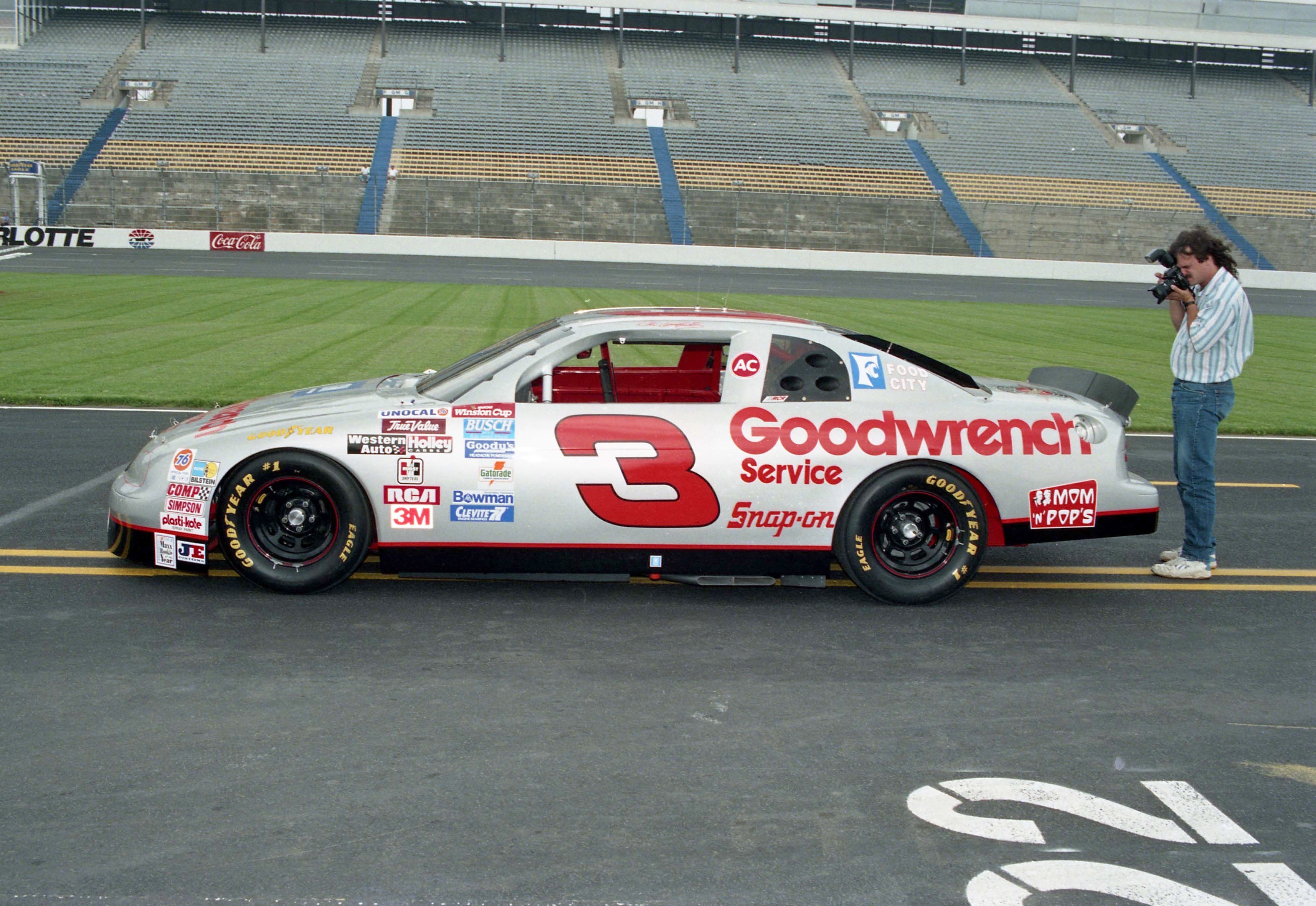Dale Earnhardt’s Pontiac
by Tom Jensen March 24, 2023
For the 1981 season only, Hall of Famer Dale Earnhardt competed in Pontiacs for three different owners.
The 1981 season was supposed to be a year of triumph for Dale Earnhardt (NASCAR Hall of Fame Class of 2010).
Instead, 1981 turned out to be a year of transition for the newly minted first-time NASCAR Cup Series champion.
It also was the only full season in which Earnhardt drove a Pontiac in the Cup Series.
One of Earnhardt’s restored No. 2 Pontiac Grand Prix models that he raced in 1981 is on display at the NASCAR Hall of Fame as part of our “Glory Road: 75 Years” exhibit, which opened in January 2023.

In 1981, Dale Earnhardt raced Pontiacs for the only time in his Cup Series career. He’s pictured here driving the Osterlund No. 2 Pontiac in the 1981 season opener at Riverside International Raceway. NASCAR Hall of Fame Collection, Gift of RJ Reynolds
When the 1981 Cup Series season opened in January at the Riverside International Raceway road course in Southern California, Earnhardt was the defending series champion. Then 29 years old, Earnhardt was beginning his third full season with Osterlund Racing, the team owned by Silicon Valley real estate developer Rod Osterlund.
The 1981 season also marked the first full year that clothing maker Wrangler sponsored Earnhardt, the start of an enduring relationship. It was a nearly ideal fit between athlete and sponsor, as the brash and rugged Earnhardt was the perfect front man for Wrangler’s “One Tough Customer” marketing campaign.

With Wrangler on board as a sponsor for 1981, Dale Earnhardt set out to defend his NASCAR championship. NASCAR Hall of Fame Collection, Stock Car Racing Magazine, Gift of Appalachian State University
Earnhardt began the ’81 season with a strong third-place finish at the season-opener at Riverside. Through most of the first half of the year, Earnhardt stayed in the top five in points, although he was winless. Still, coming off capturing the Cup title a year earlier, the ’81 season did not get off to the start everyone on the team was hoping for.
Gossip in the NASCAR garage didn’t help matters. In early June, talk spread that the team was for sale.
Osterlund, who was battling financial challenges at the time, flatly denied rumors that he was selling his team. “Osterlund Racing is not for sale,” he said. “I plan on keeping it indefinitely.”
But by the end of the month, Osterlund sold his team, including cars, shop and equipment, for a reported $1.7 million to J.D. Stacy, a Kentucky entrepreneur who made his fortune in the coal-mining business. A somewhat mysterious and controversial character, Stacy immediately made headlines with his new acquisition, but not in a good way.
Stacy brought in his own executives to run the business, dismissing several people who were both close friends of Earnhardt and executives at Osterlund Racing. Among those let go were Team Manager Roland Wlodyka and Vice President of Marketing Joe Whitlock, two talented leaders who were confidants of Earnhardt.

Unhappy with the changes made by new team owner J.D. Stacy, Dale Earnhardt left Stacy’s team after just four races. Photo courtesy of NASCAR Archives & Research Center via Getty Images
Earnhardt, a fiercely loyal individual, was not happy with the changes and began weighing his career options in the wake of the turmoil.
“I think you’ll see Earnhardt and Wrangler go their own way in the very near future,” Wlodyka said after being let go.
As it turned out, the near future turned out to be very near indeed.

Although certainly competitive in 1981, Dale Earnhardt (car No. 2) was unable to repeat as champion. Photo courtesy of NASCAR Archives & Research Center via Getty Images
Earnhardt only drove in four races for Stacy, before departing for his first stint with Richard Childress Racing, where he would finish out the 1981 season, replacing team owner and driver Richard Childress (Class of 2017) in the cockpit. Junior Johnson (Class of 2010) reportedly advised Childress to give up driving, hire Earnhardt and concentrate on team ownership, which is what happened.
As for Earnhardt, who was replaced in the No. 2 Pontiac by Joe Ruttman, the departure from Stacy was a business decision.
“I’m not mad,” Earnhardt said after quitting Stacy’s squad. “I just feel I have to make a change and now is the time to do it.”

Junior Johnson (right) helped Dale Earnhardt transition to a new team midway through the 1981 season. NASCAR Hall of Fame Permanent Collection, gift of R.J. Reynolds Tobacco Co.
The No. 2 Pontiac on Glory Road is one of the cars Earnhardt drove for Osterlund in the 1981 season. That year, Earnhardt competed in 16 races for Osterlund, four for Stacy and the final 11 for RCR.
At Darlington in late summer of ‘81, Childress told Earnhardt that he did not have the equipment that Earnhardt would need to win a championship and suggested that Earnhardt drive for Hall of Famer Bud Moore (Class of 2013) until RCR was ready to contend for titles. Earnhardt took the advice, driving for Moore in 1982-83.
In 1984, Earnhardt rejoined RCR and went on to win six of his seven Cup championships with that team.
Although 1981 was not Earnhardt’s best season – he finished seventh in the final points standings – the 1981 Pontiac he drove during the first half of the season is a historically important artifact that marked a key period of transition in his Hall of Fame career. We are honored to have it on display as part of “Glory Road: 75 Years.”
Plan a visit to the NASCAR Hall of Fame and purchase tickets at nascarhall.com/tickets.













